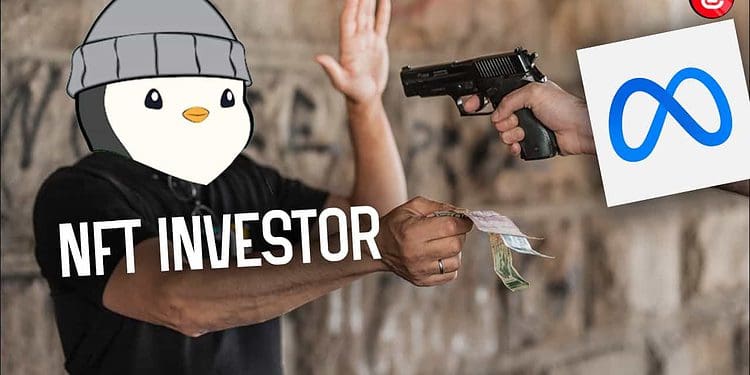Controversy hits the NFT and crypto space, as Meta, formally known as Facebook, has just announced how it plans to monetize its Horizon Worlds metaverse. The monetization plans come to the tune of taking a 47.5% fee on every digital asset transaction within its virtual world.
Let’s dive in!
TLDR
- Meta scaring away users with high fees
- Decentralization is at risk
- Who is going to own the metaverse
In October 2021 Facebook announced it was rebranding to Meta, and was planning on adapting to the modern world, at last, by building a metaverse of their own.
They have just released their plans for monetizing their virtual world, which will be achieved through the sale of in-world items.
The metaverse they are building is called Horizon Worlds, and is currently accessible through their virtual reality headset, Oculus. They have begun testing their monetization tool by allowing a select group of users – in the US and Canada – to create digital items, and effects, that can then be sold within the virtual world.
What has hit the NFT space hard is one specific detail regarding the transactions of these in-world items. Meta is planning on taking a 47. 5% cut per transaction.
These fees would be split as follows:
- 30% will be going to Meta, via the Oculus platform
- 25% of the remaining amount goes to the Meta App Store
It seems the leading team at Meta may be getting a little greedy, and as a result might scare off some potential users, especially those who are already accustomed to the NFT, crypto, and web3 space.
Currently anybody partaking in NFT creation, trading, or collecting, have come to know lower fees.
OpenSea, for example, takes a 2.5% fee from every NFT transaction. The seller of the NFT can set their own price for it, but the creator of the NFT can set a secondary sales fee as well, that will always be collected and sent back to them when NFT is sold on the OpenSea platform. But this doesn’t amount to much, certainly not as much as Meta is asking for.
Traders like to see low secondary sale fees, as this means more of a profit margin for themselves. Typically, you could expect anywhere between 2% and 10% in secondary sales fees on most collections.
However… what exactly is Meta selling?
I can’t believe it’s not an NFT!
The digital assets that Meta is planning on selling within are not even NFTs, but traditional digital items, which cannot be provably owned.
This creates a bit of confusion, especially when they are trying to compete with metaverses such as The Sandbox and Decentraland, within which NFTs play a big role.
All the information coming from Meta’s metaverse venture is bringing up a major talking point. One of whether a metaverse should be centralized, or decentralized.
Centralized vs Decentralized metaverses
Many decentralization purists call for a fully decentralized metaverse.
This would mean incorporating decentralization into every aspect of that virtual world, all the way from the digital assets themselves, right through to the currency, and even the rendering technology used – yes, we are looking at you Render Network.
One major problem faced with a centralized metaverse is its central point of failure – in this instance, Meta.
As a central point of authority, they have the power to cut off users, block accounts, confiscate assets, and even shut down the virtual world at any given moment, as they will.
Further, the astronomical fees that Meta is proposing for the in-world item sales is fuelled by centralized greed. Decentralization is all about cutting out the middleman, and in this case the middle man wants a little too much.
Banter’s take
EXTERMINATE!
EXTERMINATE!
EXTERMINATE!
Real Banter’s take
There is a tug of war playing out between major companies each wanting their cut of the metaverse.
The reality is that (for now) there is no truly decentralized metaverse; there is at least one aspect of centralization to every virtual world we know.
But when it comes to these current centralized virtual worlds, companies will have to play it right if they want to build, increase, and sustain their user base.






